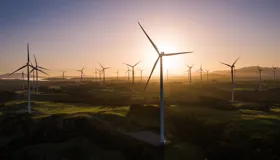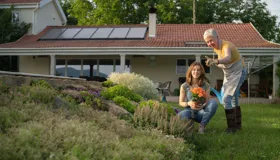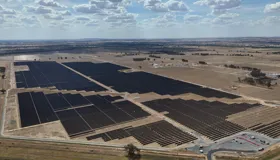
Palisade Renewable Energy Fund targets investors seeking exposure to clean energy
Supporting a pipeline of renewable energy projects
Palisade Renewable Energy Fund was designed to attract Australian institutional investment into clean energy. PREF was one of Australia’s first dedicated renewable energy funds of significant scale.
$75m
CEFC equity
Cornerstone
investor
Solar and wind
assets
The CEFC's existing and now extended commitment through the PREF will support Palisade's renewable energy strategy. It will also attract further institutional capital to an existing diverse portfolio of renewable energy assets and match the tremendous pipeline of opportunities we are currently working on.Roger LloydCEO, Palisade Investment Partners
Our investment
The CEFC was a cornerstone equity investor in Palisade Renewable Energy Fund (PREF), committing a $75 million equity investment in 2016 when the fund was established with three seed assets by global infrastructure and real assets manager Palisade Investment Partners.
Today, Palisade Renewable Energy Fund (PREF) is a major shareholder in Intera Renewables, which replaced the existing ownership and individual finance arrangements for five of six assets held by PREF with a single ownership structure and financing facility secured against the combined pool of assets. PREF has maintained its direct ownership share of the remaining asset - Waterloo Wind Farm.
The PREF assets are:
- 420 MW Macarthur Wind Farm in Victoria
- 270 MW Snowtown 2 Wind Farm in South Australia
- 131 MW Waterloo Wind Farm in South Australia
- 116 MW Ross River Solar Farm in Queensland
- 112 MW Granville Harbour Wind Farm in Tasmania
- 94.5 MW Hallett 1 Wind Farm, South Australia.
The CEFC has previously held direct equity in Granville Harbour Wind Farm and Ross River Solar Farm.
our impact
Driving sector growth by unlocking investment potential
The CEFC has been at the cutting edge of investment in renewable energy technologies since it began investing. At that time, the appetite of institutional investors tended towards buying into fully constructed infrastructure projects.
Palisade Investment Partners created its specialist renewable energy fund in 2016 to attract mid-tier and large institutional investors to support the next wave of renewable energy projects.
While these mid-tier institutional investors typically lacked the scale to invest directly in projects, investment in a fund offered a way to achieve exposure to a range of assets in the clean energy sector.
Equity to accelerate development
PREF invests in a variety of renewable energy projects throughout Australia, ranging from late-stage greenfield developments to operating assets. The key focus of PREF is on wind and solar assets and the fund aims to provide investors with diversified exposure to assets across geography, technology and revenue source.
The CEFC cornerstone investment in PREF sought to unlock investment potential and tap into the growing investor appetite for renewable energy investment opportunities. Increasing available equity enables projects to be developed sooner, which increases Australia’s clean energy capacity and helps drive down development costs.




